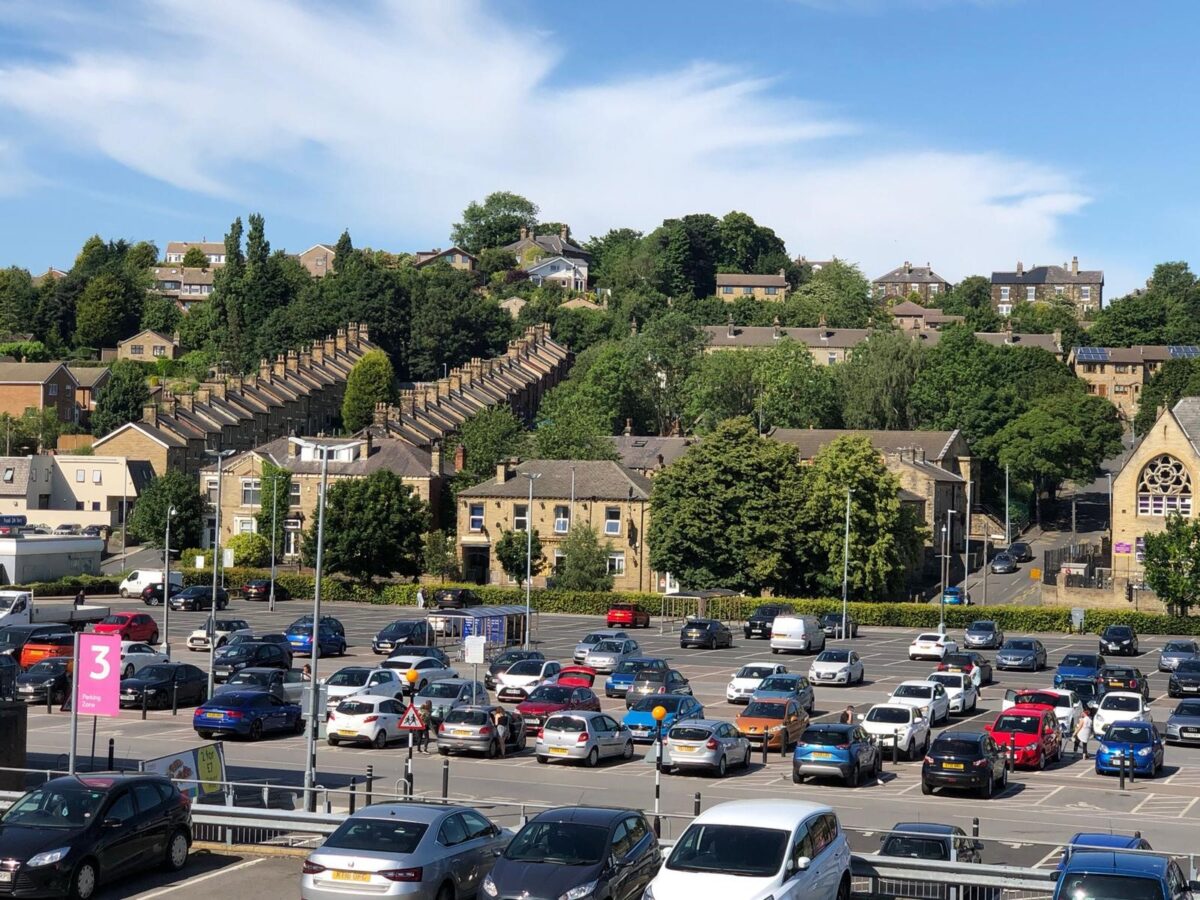‘I can say it is cold, very cold in my room. I have got no access to the kitchen, no fridge, no basic things that I need.’
Many complex social challenges have not received much focus over the last 18 months while we have been grappling with the pandemic. But they have continued to bubble away out of sight and, as we are now (hopefully) moving towards the end of the pandemic, some of them are reaching boiling point. This is true of hidden homelessness and the stark lack of truly affordable housing which causes people to be stuck in Temporary Accommodation for far too long.
I work for Justlife Foundation, an organisation that works to ensure stays in Temporary Accommodation (TA) are as short, safe and healthy as possible. TA is a broad term that describes short-term housing used for people who are homeless while waiting for something more permanent that satisfies the main housing duty under the Housing Act 1996. Residents of TA might have a short-term agreement, nightly licenses or non-secure tenancies, offering little or no tenancy rights, and they may or may not receive support from services.
We would call everyone living in TA ‘hidden homeless,’ however, some are arguably even more hidden than others – with tens of thousands single homeless households living in insecure housing, not placed by local authorities under homelessness legislation and not included in the official statistics that tell us how many individuals and families are living in local authority-placed TA. All those who are ‘hidden homeless’ are not visible to the public and wider society in the way those who sleep rough.
Life in Temporary Accommodation
Experiences for hidden homeless households in TA is anything but short, safe and healthy. Research conducted between 2014-2016 with the Institute for Public Policy Research (IPPR) North uncovered a bleak reality, where individuals with limited access to local authority support ended up staying in TA for anywhere from six months to 38 years.
‘When I first moved in, I had no running water for over a week. I kept complaining about it. So I couldn’t shower, I couldn’t even use the loo, and literally no one would do anything. They kept saying that someone would do something, and every day I’d come back and it would still not work. It was just so frustrating. And also I think I’d want to know that there’s no cooking facilities at all.’
Our research revealed that approximately half the TA residents do not have a working lock on their door. Most share filthy squalid bathroom facilities that are regularly out of order, many have windows that do not close, and most were not provided with bedding. Illegal money lending and drug dealing are commonplace, and the prognosis for those entering TA is likely to involve deteriorating mental and physical health, increased anxiety, higher drug and alcohol use, increased social isolation, and an increased risk of premature death.
This picture is true for single homeless households and families alike (see Gold Standard Report, Shared Health Foundation). Children are often placed alongside single adults with complex mental health and substance misuse problems.
“It’s hell. You can’t sleep, you got your ears, playing the music loud. You report it to [the landlord] and he just gets really nasty with you, and if you challenge him he attacks you against the wall. He’s had me pinned against the wall at least four times, and I’ve just had enough of it.”
Even before the pandemic, TA residents were disadvantaged, with many facing multiple and complex issues. This has worsened in the last year according to our most recent research into the impact of COVID-19 on those we support. Interviewees spoke of horrible conditions, perfect for the spread of COVID-19, in which they felt forced to ‘self-isolate’. The closure of many support services and the decrease in available move-on accommodation, has left many residents feeling more trapped than ever and experiencing deteriorating physical and mental health.
‘When he [the landlord] comes around he doesn’t knock on the door he just walks in. So if you’re getting dressed, it’s tough…. he can get in with his key, yes. Because there is no inner lock, so you can’t lock him out, unless you barricade the door. And there’s even females there as well.’
Numbers continue to rise
The use of TA has significantly increased during the pandemic. Under ‘Everyone In’, 15,000 rough sleepers were housed, mainly in hotels. Now that has ended, the shortage of appropriate housing means many are being moved either into TA or back onto the streets. Shelter’s report “Homeless in a Pandemic” showed over 250,000 people were living in TA across England in June 2020, an increase of 83% since 2010. This figure does not include those who were placed inside under ‘Everyone In’ and does not account for those who are yet to lose their home as the evictions ban is lifted.
In addition, national statistics show only those placed by local authorities in TA, and not those homeless individuals who have found some other way into different kinds of Temporary Accommodation. Our 2017 report, ‘Lifting the Lid on Hidden Homelessness: A New Analysis’ estimated the number of households living in Bed & Breakfasts (B&B) across England to be close to 51,500, almost 10 times the official figure of 5,870.
The picture becomes even more murky when we take Exempt Accommodation into account. Exempt accommodation is a type of housing where landlords receive the higher housing benefit rate due to the provision of additional services for residents. It technically sits in the social housing—rather than private housing—sector and has existed for many years. However, changes to Universal Credit, and the rising cost of housing, have created a wave of new Houses in Multiple Occupation (HMO). Many previously used as Bed & Breakfasts or private hostels are changing, as landlords move into the more lucrative exempt accommodation sector as landlords seek higher returns.
For people stuck there, Exempt Accommodation can be difficult to distinguish from TA. As Councillor Sharon Thompson’s blog about Exempt Accommodation in Birmingham (10th May) shows, there is a distinct lack of regulation and standards across both TA and Exempt Accommodation, as well as limited enforcement powers for those in local authorities who want to ensure standards are being kept. Standards in both types of accommodation are often very poor.
For people stuck there, Exempt Accommodation can be difficult to distinguish from TA. As Councillor Sharon Thompson’s blog about Exempt Accommodation in Birmingham (10th May) shows, there is a distinct lack of regulation and standards across both TA and Exempt Accommodation, as well as limited enforcement powers for those in local authorities who want to ensure standards are being kept. Standards in both types of accommodation are often very poor.
What can be done
We agree with the five areas outlined in the petition to end the scandal of Exempt Accommodation that collectively call on the national government to create more regulation within the sector, to increase funding to local authorities to enable greater resource and effective enforcement and, finally, to create safeguards around community and resident impact. Each of these would have a positive impact on those living in all forms of temporary housing, but we also feel there are further ways to address additional problems with TA both locally and nationally:
Setting up local ‘Temporary Accommodation Action Groups’
- First recommended in Nowhere Fast 2016, these are local groups that include all stakeholders of the accommodation, including residents and landlords, that come together with a common agenda to develop locally-relevant improvements to experiences in the accommodation. Currently there are four as part of our National TA Network: Brighton, East Sussex, Hackney and Manchester.
Joining, and encouraging MPs to join, the newly formed APPG on Households in TA
- Justlife and Shared Health Foundation have pushed for the development of the APPG, focusing both on quick immediate aims/objectives as well as longer-term inquiries into the impact Temporary Accommodation has on the health and wellbeing of children, families and individuals, in order to better inform parliamentarians of the issues/challenges facing those in TA across England.
We believe that both these groups, alongside targeted action to meet people’s individual needs, will be vital in bringing about positive change for the hundreds of thousands of people who are hidden away in Temporary as well as Exempt Accommodation.
References
Gossman, S; Procter, A; Paylor, D and Maciver, C. (2020) Hidden Homelessness Exposed: The impact of COVID-19 on single homeless households living in temporary accommodation. Justlife Foundation. https://www.justlife.org.uk/assets/documents/JL_Report-HiddenHomelessness-The-impact-of-COVID-19_v3.pdf
Maciver, C. (2017) Lifting the Lid on Hidden Homelessness: A new analysis. Justlife Foundation. https://www.justlife.org.uk/assets/documents/JL_UTA-Report-2017_HR_Web-Ready.pdf
Rose, A and Davies, B. (2014) Not Home: the lives of hidden homeless households in unsupported temporary accommodation in England. IPPR North. https://www.justlife.org.uk/assets/documents/not-home_dec2014.pdf
Shared Health Foundation (2019). Homeless Families: The Gold Standard: A proposal. https://1b9dd56c-a72a-4a23-82a6-2eeb4eed747d.filesusr.com/ugd/ba5732_f620bf7c1e2d45af809d9c406f253bd3.pdf

